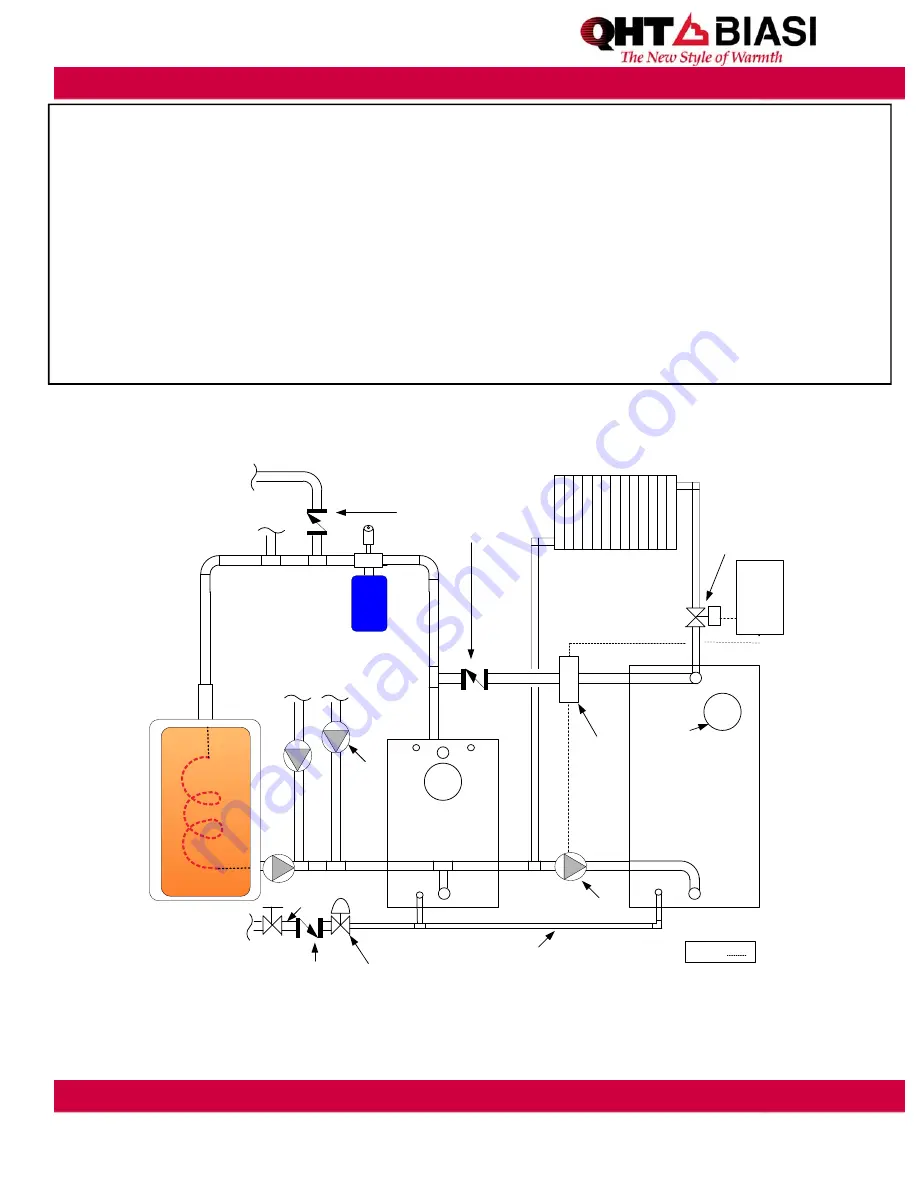
7
3WOOD Boiler
Oil/Gas Boiler
Auxiliary “Dump Zone” Utilizing Natural Thermal Circulation During Power Failure
7"Ø
Breach
Note: 3WOOD boiler
must be vented into
separate flue.
Increase Size of
Expansion Tank to
Accommodate 3WOOD
No Valves Installed on the
Radiator or Piping
Pressure
reducing
valve
Backflow
preventor
Water supply
Circ. A
Circ. B
[N.O.]
L4006B
Honeywell
Aquastat
180
°
F
Flow
Check
Flow
Check
½” Ø
¾ “ Ø
Wiring Legend
110 VAC
From
House
Service.
3WOOD Boiler piped in
parallel to Oil/ Gas Boiler
12,500 BTU/HR
Radiator to be
Installed above
the 3WOOD Boiler
110 VAC
N.O. 1" Ø
Zone Valve
DHW
Tank
In Event of
Power Failure
“OPEN CHECK
VALVES”
PROCEDURE IN EVENT OF POWER FAILURE
Should your electricity go off during the heating season, there are several procedures that should
be followed in order that you may continue to safely operate your heating system. These procedures
apply to the solid-fuel boiler, as the gas or oil-fired boiler, if any, will be completely inoperative.
1. Locate any “flow-check” valves in the system (See Pg. 7), and completely unscrew the knob on the
top of all these valves. (This will allow a certain amount of heated water to circulate by convection
throughout the house, preventing the pipes from freezing and keeping the house partially heated).
Note: This does not apply to gravity systems, as they have no flow-check
valves, and will continue to operate normally without electricity.
2. The automatic draft regulator will continue to control the wood fire in the absence of electric power. It
is important to remember that the heating system cannot dispose of a great deal of fuel without a
circulator running.
PIPING NOTES:
1. This drawing is meant to show system piping concept only. The installer is responsible for all equipment & detailing required by local
codes.
2. Discharge of Pressure Relief Valve must be piped without valves to within 3” of the floor.
3. Where required, Low Water Cutoff must be installed in the Supply piping of the oil/gas boiler







































